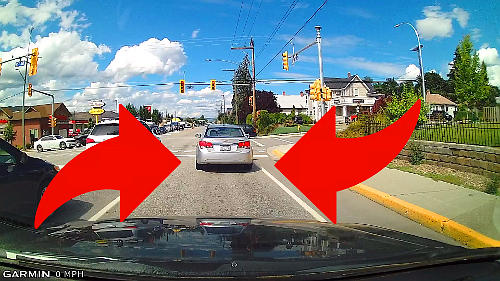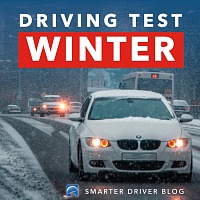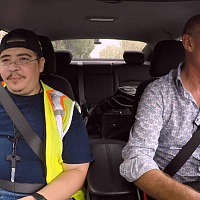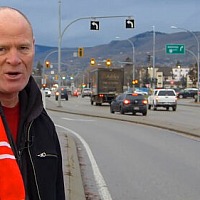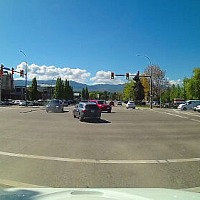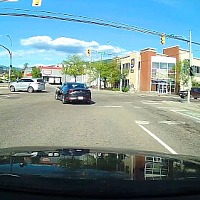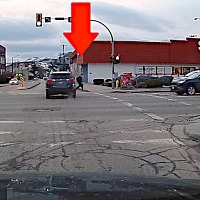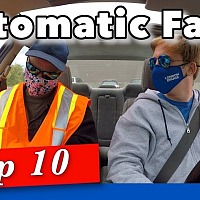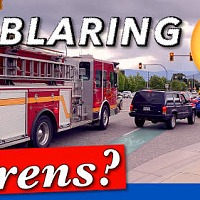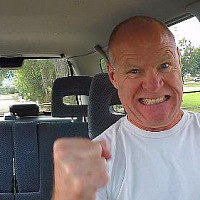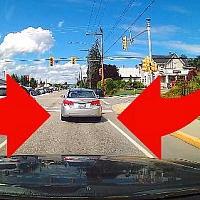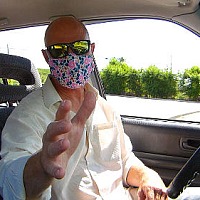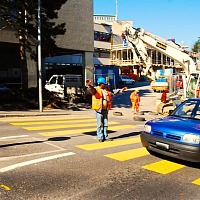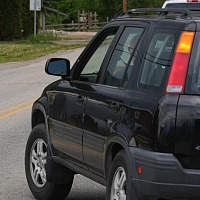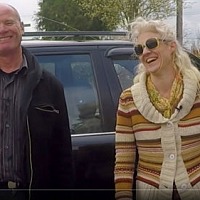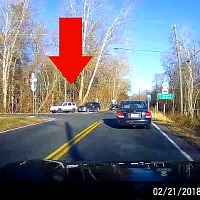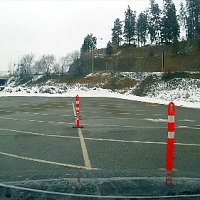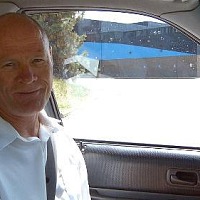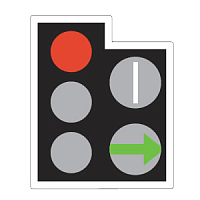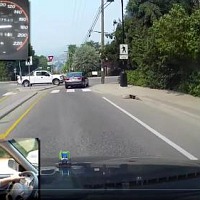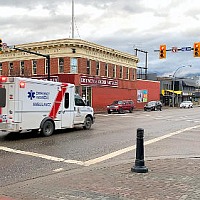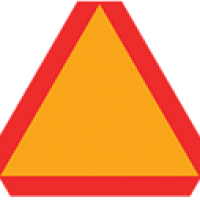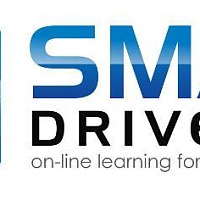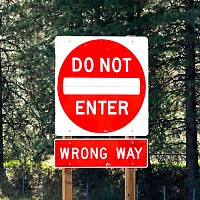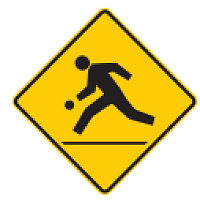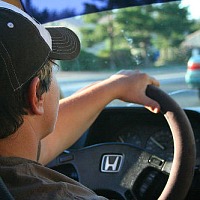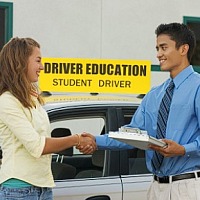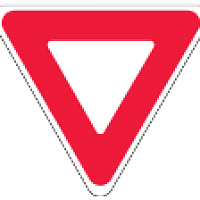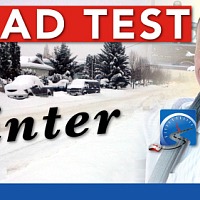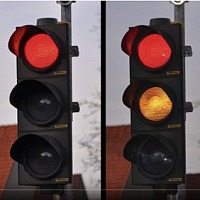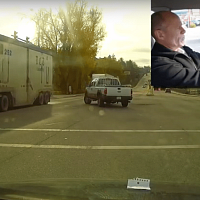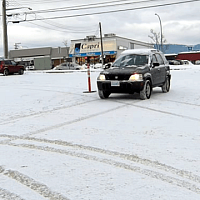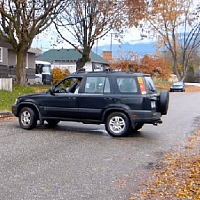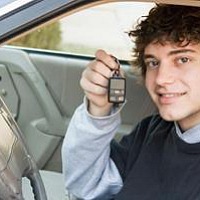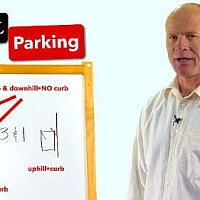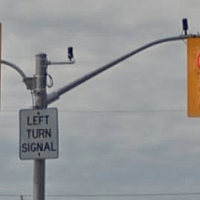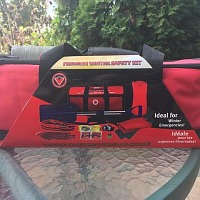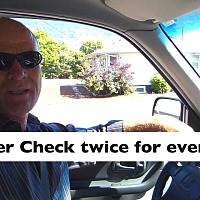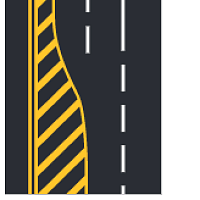Learn even faster by talking to yourself while you're driving.
Talk to Yourself & Pass Your Driver's Test :: Running Commentary
Closed Caption
Introduction
Hi there smart drivers.
Rick with Smart Drive Test talking to you today about running commentary.
Running commentary is something you can use for learning how to drive regardless of class.
Whether you're a commercial driver or learning how to drive a passenger vehicle.
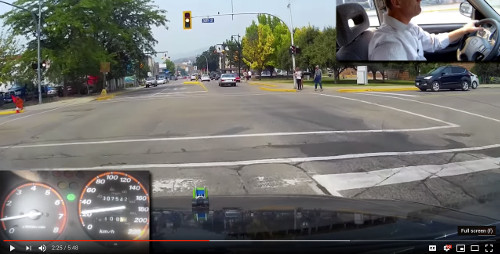
This tool will help you to learn how to drive faster and improve your overall abilities in operating a motor vehicle regardless of whether it's a car, light truck, bus or truck.
Never Apologies for Talking to Yourself
So, some of the students have actually apologized to me when they're talking to themselves as they're learning how to drive.
They're talking about what they're looking at, they're talking about the techniques and skills that they're putting in place to maneuver the vehicle through traffic and around corners and those types of things.
Actually I never say apologize for that because actually it's one of the best tools that you can use when you're learning how to do something.
Driving, learning how to build a shed or anything that you're learning how to do, running commentary is going to help you and imprint on your brain the skills and abilities and knowledge that you need for the purposes of learning how to drive.
So I would encourage you to use this technique.
It will help you to learn faster, and it will work for both passenger vehicles and drivers learning how to drive a commercial vehicle.
So today what we're gonna do is we're gonna go for a drive.
We're gonna show you how to do running commentary while you're learning how to drive, and on a road test.

I would strongly encourage you do do it on a road test as well.
So stick around.
We'll be right back with that information.
[INTRO & UPBEAT MUSIC] Hi there smart drivers, welcome back.
Rick with Smart Drive Test talking to you today about running commentary.
Running Monologue - Not Just for Super Villians
Having a monologue, talking while you're learning how to drive.
That way when you're with the driving instructor, you're with the driving examiner, they don't have to guess what you're doing.
They know exactly what you're doing as well.
It reinforces the skills and abilities and knowledge that you need to learn how to drive and raise your skill, and to be a better driver overall.
So what we're gonna do here we're gonna go for a drive and show you how to do running commentary.
Tell Everything - Don't Keep Secrets
So we're in the parking space here.
Check the mirror behind us where you have to back up in the space.
So we put the vehicle into reverse, release the parking brake.
I got my feet on the brake and the clutch.
So the reverse lights are on.
I look behind me, directly behind me, and I back up about three feet.
Letting the clutch out.
Mirror signal shoulder check.
Shoulder check into a forward gear.
Turn the steering wheel to the left.
Approximately half turn.

And looking in the path of travel, and we have a stop sign.
And we're turning right.
Mirror signal shoulder check.
Nothing behind us, we come to a safe stop at the stop line.
We stop just as the stop line rolls under the front of the vehicle.
Right turn, I can't see.
I move forward.
No one in the crosswalk.
There's a vehicle coming.
I can see now.
I shoulder check immediately before going.
I creep put, there's no vehicles coming.
And we proceed.
Get Your "How to Pass Your Driver's Test First Time"
• FEAR :: Learn the correct skills, abilities, and techniques that are required to pass your driver's test;
• SELF-CONFIDENCE :: Get the exact skills from a licensed driving instructor that will guarantee your success;
• CONFUSION :: Cut through the conflicting and incorrect information;
• QUALIFIED :: Smart Drive Test has helped 1000s to pass their drivers' test...and we can help you!
Approaching the Intersection
Looking down I have a stop sign.
I'm going to turn right, or left rather, sorry.
Into the turning lane.
Mirror signal shoulder check.
There's a vehicle behind me.

Stop at the stop line.
The body settles back on the chassis.
We move forward until we can see.
There's a UPS vehicle coming.
There's a vehicle beside us.
There's a truck coming from the right.
I can see now because the vehicle has left.
And after the pickup truck.
Shoulder check immediately before proceeding.
Steering wheel locked, shift the gear.
Let the wheel slide between my hands.
Shift the gear.
Got a green flashing light.
And I'm doing approximately 50 kilometers an hour (30mph), which is the posted speed limit.
And I keep that speed limit.
There's no one at the flashing green light.
Driving Culture - there are always things that are going to be different
Here in British Columbia flashing green light is a pedestrian crossing.
I don't see any pedestrians.
Scanning the intersection.
Slow it a little bit in case a pedestrians showed up at the crosswalk.
Scanning my mirrors.
Scanning my mirrors.
50 kilometers an hour.
Turning right.
Mirror signal shoulder check.
I'm not crossing over into the bicycle lane.
Into second gear, the way is clear.

Shoulder check immediately before going.
Scanning the traffic.
Covering the steering wheel and accelerating to road speed, which is 50 Kilometers an hour.
It's 50 kilometers an hour (30mph) unless otherwise posted.
We're doing 50 kilometers an hour.
I'm checking the traffic behind me.
The light behind me at the intersection has gone green.
Scanning both sides.
I have a good gap between me and the vehicle in front of us.
The light down there is green.
It's probably gonna be red by the time I get there.
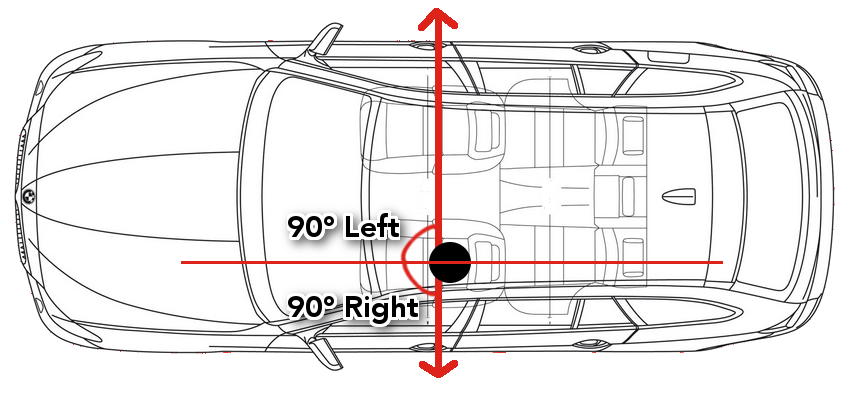
No traffic in the intersection.
Good distance behind me of the vehicles behind me.
I'm doing the speed limit.
Both hands on the steering wheel.
Traffic is good.
There's a vehicle turning in front of me.
The vehicle's a long ways away.
Traffic behind me is good.
I'm scanning my mirrors.
And as I predicted, the light is going to red.
There's no one in the intersection there.
And I'm simply letting off the throttle and slowing down back here.
Because there's no point rushing up to the red light.
I'm simply letting the vehicle slow down.
Stopping in Traffic to be a Safer, Smarter Driver
And the tachometer has started to slug down, so I push the clutch in and bring the vehicle to a stop.
And I can see the tires in front of me making clear contact with the pavement.
Back into a forward gear after the vehicle comes to a complete stop.
And we stop at the intersection, and we wait.
There's no pedestrians.
Traffic is good.
Cross traffic has stopped, so that means the light is going to change green shortly.
The traffic on the other side has the advance green.
Therefore our light is going to go green momentarily.
Into a forward gear, both hands on the steering wheel.
Vehicle behind me is really close to me.
Closer than he or she should be.

Light has gone green.
Scanning the intersection, the intersection is good.
Proceeding through the intersection and attaining highway speed, which is 50 kilometers an hour.
Good gap in front of me.
Speed sign says 50 kilometers an hour (30mph).
We're going to attain 50 kilometers an hour (30mph).
We're doing 50 kilometers an hour (30mph).
Traffic behind me is good.
I'm in the right lane so that the other vehicles can pass in the other lane.
Good distance behind me.
50 kilometers an hour (30mph) and I'm going to turn left at the second traffic light.
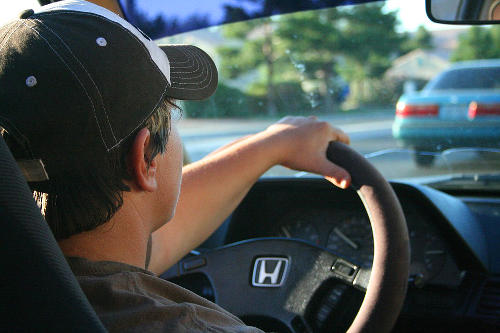
No pedestrians at the flashing green light, which is flashing green light is pedestrian activated traffic light in the province of British Columbia.
Slow down a little bit.
Looking and Seeing
Mirror, signal, shoulder check.
No traffic behind me.
Shoulder checking again before I move over.
Left my signal on all the way across.
Shoulder checking again as I'm moving into the next lane.
Gonna stay in the outside lane.
That way I'll be in the right hand lane when I go around the corner.
I'm slowing down.
Put my signal back on.
Stopping behind the vehicle in front of me so I can see the tires making clear contact with the pavement.
Vehicle comes to a complete stop.
I put it into a forward gear, both hands on the steering wheel.
Light has gone and we proceed, without rolling backwards.
Shift into a second gear and into a third gear, and I stay in my lane.
I drive straight into the intersection, look where I want to go.
And then recover the steering wheel and accelerate to highway speed, which is 50 kilometers an hour (30mph) in the city, unless otherwise posted.
We're 50 kilometers an hour (30mph).
And we have good distance behind us.
No traffic, no pedestrians at the pedestrian activated crosswalk here.
As you can see in the Dash Cam, good distance behind us.
Shifting gears after the pedestrian crosswalk.
Checking my mirrors.
Vehicle is good behind me.
I'm gonna turn right at the traffic light, at the second traffic light actually.
No one at the intersection.
And vehicles are braking in front of us.
The car is turning, shifting down a gear.
Actually the vehicle in front of us shifted too early, or signaled too early.
Signal, across the bicycle lane.
I shoulder check twice.
Light is red.
How to Handle Intersections
That means I need to come to a complete stop.
Light has turned to green.
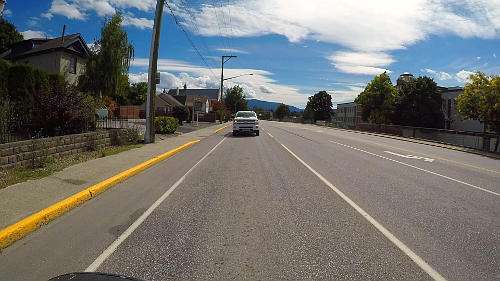
Now I don't have to stop.
Shoulder checking immediately before scanning the intersection, nobody there.
Hand over hand, recovering the steering wheel, and accelerating to speed.
50 kilometers an hour (30mph) unless otherwise posted.
And we're doing 50 kilometers an hour.
Looking in the path of travel, keeping a good distance between us and the vehicle in front of us.
50 kilometers an hour, checking my mirrors.
Good distance between me and the vehicles behind us.
Pedestrian in the crosswalk.
The vehicle back there at the intersection was staying where he or she was supposed to.
Keeping so I can see the tires making clear contact.
The pedestrian light has gone off.
The pedestrian has cleared the roadway.
Shifting the gear and putting my hand immediately back onto the steering wheel.
Nobody at the intersection.
Nobody at the flashing green light, which is a pedestrian activated light.
No one in the intersection, no vehicles, no road users doing the speed limit.
Vehicles behind us are good, checking our mirrors.
And we're going to turn left at the next intersection.
Approximately half a block from the intersection we're going to put our left signal on.
Mirror signal shoulder check, moving to the left and into the turning lane.
And we're going to stop so we can see the wheels, the rear tires making clear contact with the pavement in front of us.
That leaves us about approximately one vehicle space between us and them.
That's essentially how you do a running commentary.
It's that simple.
Smart Points to Remember
You just do a monologue of what you're doing, what you're looking at, and the skills and techniques, the step by step procedure for executing turns, lane changes and those types of things.
And that's how you do a running monologue for the purposes of learning how to drive and for a diving test.
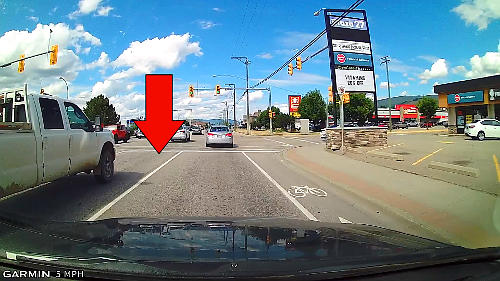
Quick review of running commentary while you're learning how to drive.
Running commentary is simply a monologue that you do while you're learning how to drive.
And essentially what you're doing is talking about the other road users and traffic on the roadway as you're driving down the roadway.
As well you are discussing and saying out loud the steps for the procedures for the slow speed maneuvers, how you're doing your turns, whether you're looking at a stale green light and those types of things.
Essentially what you're doing is you're simply talking out loud and reinforcing the techniques, skills and abilities that you need to learn how to drive.
Use Your Running Commentary on a Driver's Test
And I would strongly encourage you as well do this on a road test because when you're doing it on a road test the driving examiner is not guessing what you're looking at.
He or she knows what you're looking at because you've said it out loud.
I'm looking at the green traffic light.
I know that the hand is flashing.
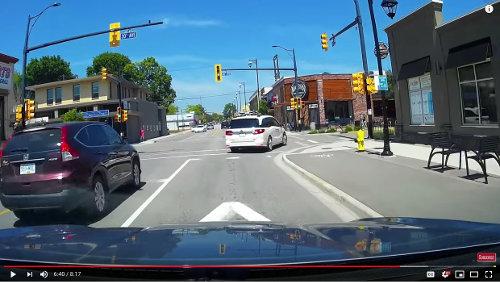
Therefore the light is stale, and I'm preparing to stop if the light turns to yellow.
I'm covering the brake.
Therefore the driving examiner is not guessing.
He or she knows exactly what you're doing because you're doing a running monologue.
You're doing a running commentary while you're learning how to drive.
And I've had students apologize for talking to themselves as they call it.
Actually no, it's a really good tool for improving your overall driving ability because it reinforces in our brain what we're doing, and reinforces the skills and abilities and knowledge that you need to be able to learn how to drive better.
So employ running commentary while you're learning how to drive, and for that matter, when you're learning how to do anything.
Question for my smart drivers:
Do you think you're gonna employ running commentary?
Do you think it will help you to learn the skills and abilities and knowledge that you need to learn how to drive faster?
Leave a comment down in the comments section there.
All that helps out the new drivers working towards getting their license regardless of class.
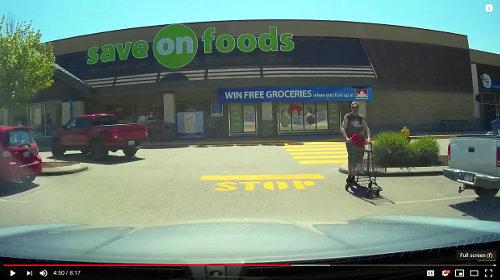
I'm Rick with Smart Drive Test.
Thanks for very much for watching.
If you like what you see here, share, subscribe, leave a comment down in the comments section.
As well, hits that thumbs-up button.
Check out all the videos here on the channel.
If you're working towards a license or starting a career as a truck or a bus driver, lots of great information here as well.
Head over to our website.
Good information over there.
And awesome online courses that you can purchase.
Thanks again for watching.
Good luck on your license.
And remember, pick the best answer, not necessarily the right answer.
Have a great day.
Bye now.
(upbeat music)
Blooper
Putting our signal on right away.
Move over to the right hand lane.





